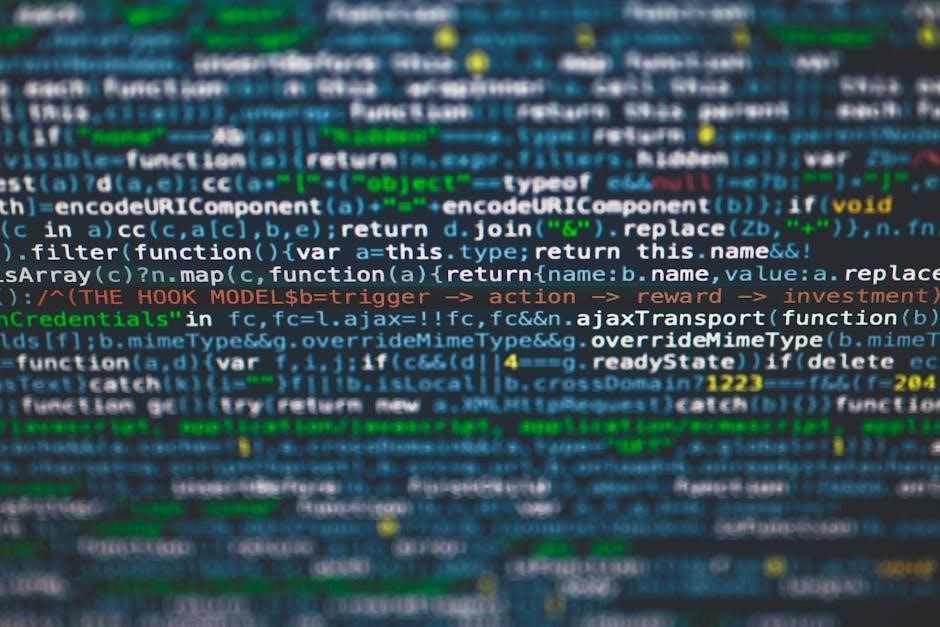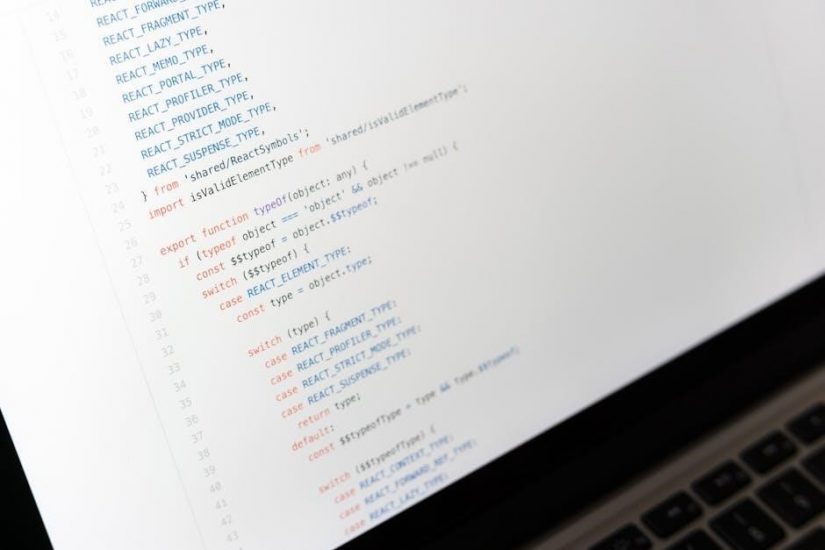Welcome to the Lennox Error Codes Manual, your comprehensive guide to understanding and resolving issues with Lennox HVAC systems. This manual provides detailed explanations of error codes, troubleshooting steps, and maintenance tips to ensure optimal performance and comfort. By decoding LED patterns and error messages, homeowners and technicians can diagnose and fix problems efficiently, reducing downtime and extending system lifespan. This resource is essential for anyone seeking to master Lennox furnace troubleshooting and error code interpretation.
1.1 Overview of Lennox HVAC Systems
Lennox HVAC systems are renowned for their reliability, energy efficiency, and innovative technology. These systems include furnaces, heat pumps, and air conditioners, designed to provide consistent comfort and performance. Lennox HVAC units are equipped with advanced features like modulating burners, variable-speed motors, and smart thermostats, ensuring precise temperature control and reduced energy consumption. Understanding the operation and components of Lennox systems is crucial for identifying potential issues and interpreting error codes effectively. This overview provides a foundation for diagnosing and troubleshooting common problems, helping users maintain optimal system performance and extend equipment lifespan.
1.2 Importance of Understanding Error Codes
Understanding Lennox error codes is crucial for diagnosing and resolving issues promptly, ensuring optimal system performance. Error codes provide clear indicators of potential problems, allowing homeowners and technicians to address issues before they escalate. This knowledge helps prevent further damage, reduces downtime, and minimizes repair costs. By interpreting error codes accurately, users can identify root causes, such as faulty sensors, electrical issues, or blocked components. This understanding empowers homeowners to take proactive steps, ensuring their HVAC systems operate efficiently and effectively. Regular monitoring and maintenance can also be guided by error code insights, enhancing overall system reliability and longevity.

Understanding Lennox Error Codes
Lennox error codes are diagnostic tools indicating system issues. They help identify problems quickly, ensuring efficient troubleshooting and maintenance. Understanding them prevents breakdowns and ensures optimal performance.

2.1 How to Read Lennox Furnace Error Codes
To read Lennox furnace error codes, locate the display on your furnace or thermostat. Codes flash as LED lights or appear on a digital screen. Reference the user manual for specific code meanings, as they vary by model. Most codes consist of letters and numbers, indicating issues like sensor faults or system malfunctions. Check connections and ensure proper installation before advanced troubleshooting. Understanding these codes helps diagnose problems accurately, ensuring timely repairs and maintaining system efficiency. Always refer to the manual or contact a professional for complex issues to avoid further damage.
2.2 LED Light Patterns and Their Meanings
Lennox furnaces use LED lights to indicate system status and errors. These lights flash in specific patterns, such as steady, blinking, or alternating colors. For example, a steady green light often indicates normal operation, while a flashing red light signals an error. The pattern’s speed and color combination help identify the issue. Refer to the user manual for detailed interpretations, as patterns vary by model. Understanding these visual cues allows for quick diagnosis of problems, such as sensor faults or communication issues. Always match the observed pattern to the manual’s guide for accurate troubleshooting and repairs.
2.3 Structure of Lennox Error Codes
Lennox error codes are typically alphanumeric, consisting of a letter followed by numbers. For example, codes like “E1” or “E5” indicate specific issues. The letter “E” stands for error, while the number represents the type of fault. Some codes may include additional characters for more detailed information. This structured format helps users and technicians quickly identify the nature of the problem. The codes are standardized across Lennox systems, making diagnosis consistent. Referencing the manual or online resources provides detailed explanations for each code, ensuring accurate troubleshooting and repair. Understanding this structure is key to resolving issues efficiently.

Common Lennox Error Codes
Lennox systems display various error codes indicating specific issues. Common codes include E1, E3, E4, E5, and E6, each representing distinct faults like communication errors, sensor problems, or mechanical issues;
3;1 E1 Error Code: Indoor/Outdoor Unit Communication Breakdown
The E1 error code indicates a communication failure between the indoor and outdoor units of a Lennox HVAC system. This issue often arises due to faulty wiring, loose connections, or signal interference. It can also occur if the outdoor unit is not powered correctly or if there is a malfunction in the communication circuit. To resolve this, check the wiring for damage or corrosion, ensure all connections are secure, and verify that the outdoor unit has proper power supply. If the problem persists, it may require professional assistance to diagnose and repair the communication link.
3.2 E5 Error Code: Voltage Protection or Temperature Sensor Issues
The E5 error code signifies a voltage protection issue or a problem with the temperature sensor in Lennox HVAC systems. This code typically appears when the system detects abnormal voltage levels or a malfunction in the temperature sensor, which can disrupt heating or cooling operations. Possible causes include faulty wiring, a defective temperature sensor, or incorrect voltage supply. To resolve this, inspect the sensor for damage, check wiring connections, and ensure proper voltage levels. If the issue persists, replacing the temperature sensor or consulting a professional may be necessary to restore system functionality and prevent further damage.
3.3 E3 Error Code: Water Level Sensor Fault
The E3 error code indicates a water level sensor fault in Lennox HVAC systems. This sensor monitors water levels to prevent overflow or damage. Possible causes include a faulty sensor, blocked drain lines, or improper installation. If the sensor detects abnormal water levels, the system shuts down to avoid damage. To resolve this, inspect the drain for blockages, ensure the sensor is clean, and verify proper installation. If issues persist, replacing the sensor or consulting a professional may be necessary to restore functionality and prevent further complications.

3.4 E4 Error Code: Washing Motor Error
The E4 error code indicates a washing motor error in Lennox systems. This typically occurs when the washing motor fails to operate correctly, often due to wear, electrical issues, or faulty wiring. The washing motor is essential for maintaining system efficiency and preventing mold buildup by periodically washing the interior. To resolve this, inspect the motor and its connections for damage or blockages. If the problem persists, replacing the washing motor or checking the control board for proper functionality may be necessary. Professional assistance is recommended if the issue remains unresolved after basic troubleshooting.
3.5 E6 Error Code: Door Error
The E6 error code indicates a door-related issue in Lennox systems. This occurs when the system detects an open door or improper closure, which can disrupt operation. Common causes include an open or ajar door, a faulty door switch, or sensor malfunction. To resolve this, ensure the door is fully closed and latched. If the error persists, inspect the door switch or sensor for damage or debris. Cleaning the sensor gently with a soft cloth may fix the issue. If problems remain, replace the faulty component. Addressing this promptly prevents inefficiency or further damage. Always ensure proper door alignment and function for optimal system performance.

Troubleshooting Lennox Error Codes
Troubleshooting Lennox error codes requires systematic checks. Refer to the error guide, inspect wiring, and ensure proper ventilation. Resetting or replacing parts may resolve issues. Maintenance prevents errors and ensures efficiency.
4.1 Basic Troubleshooting Steps
Start by identifying the error code displayed. Refer to the Lennox manual or online resources for code meanings. Ensure the system is powered off before inspecting. Check power sources, reset buttons, and verify proper connections. Inspect air filters, hoses, and vents for blockages or damage. Clean or replace components as needed. Restart the system to see if the error persists. If issues remain, proceed to advanced troubleshooting or contact a professional. Regular maintenance and timely repairs can prevent recurring errors and ensure optimal system performance.
4.2 Advanced Troubleshooting Techniques
For persistent issues, advanced troubleshooting involves detailed system analysis. Use multimeters to test voltage levels and circuit continuity. Inspect sensors, such as temperature or pressure sensors, for accuracy. Check for loose or corroded connections that may disrupt communication. Analyze error code patterns to identify recurring faults. Perform system resets or factory resets if necessary. Consult diagnostic tools or software for deeper insights. Advanced techniques require technical knowledge, so ensure proper training or consult a certified technician. These methods help resolve complex issues efficiently, ensuring system reliability and performance.
4.3 Resetting the Lennox Furnace
Resetting your Lennox furnace can resolve minor issues. Start by turning off the power at the circuit breaker or switch; Wait 30 seconds to allow the system to fully reset. Turn the power back on and check if the error code persists. For some models, press and hold the reset button near the blower motor for 3-5 seconds. If the issue remains, ensure the filter is clean and properly installed. If the error reoccurs, contact a certified technician, as it may indicate a more serious problem requiring professional diagnosis and repair.

Common Causes of Lennox Error Codes
Common causes of Lennox error codes include faulty wiring, sensor malfunctions, blocked airflow, and worn-out components. Regular maintenance can help prevent these issues arising.
5.1 Incorrect Connections or Wiring Issues
Incorrect connections or wiring issues are common causes of Lennox error codes. These problems often arise from improper installation, wear and tear, or environmental factors like moisture. Loose connections can disrupt communication between system components, leading to error codes. Over time, corroded or damaged wires may fail to transmit signals accurately, causing the HVAC system to malfunction. Addressing these issues promptly is crucial to prevent escalation into more severe problems such as electrical fires or component damage. Regular inspections and professional maintenance can help identify and rectify wiring issues before they become critical.
5.2 Folded or Blocked Hose
A folded or blocked hose is a common issue that triggers Lennox error codes. This occurs when the drainage or refrigerant hose becomes kinked, restricting airflow or fluid flow. Blockages can result from improper installation, debris accumulation, or mechanical damage. A blocked hose disrupts system performance, leading to reduced efficiency and potential component damage. Signs include reduced heating/cooling output, increased energy bills, or error codes indicating system malfunctions. Regular inspection and maintenance are essential to prevent such issues. Ensuring hoses are properly routed and free from obstructions can significantly enhance system reliability and longevity, avoiding costly repairs and downtime.
5.3 Dirty or Missing Air Filters
Dirty or missing air filters are a frequent cause of Lennox error codes. When filters become clogged with dust and debris, airflow is restricted, reducing system efficiency and potentially causing mechanical stress. A missing filter allows contaminants to enter the system, leading to premature wear on components. Regularly cleaning or replacing air filters is crucial to maintain optimal performance and prevent error codes. Check filters monthly and replace them as needed to ensure proper airflow and system operation. Neglecting this maintenance can lead to increased energy consumption and potentially trigger error codes related to poor system performance or overheating.
5.4 Faulty Sensors or Electrical Components
Faulty sensors or electrical components are common causes of Lennox error codes. Sensors play a critical role in monitoring system performance, such as temperature, pressure, and airflow. If a sensor fails or malfunctions, it can disrupt communication between components, leading to error codes like E1 or E5. Electrical issues, such as loose connections or short circuits, can also trigger errors. Regular inspection of sensors and wiring is essential to ensure proper system operation. Cleaning or replacing faulty sensors and tightening connections can often resolve issues. If problems persist, professional diagnosis may be required to identify and repair damaged components.
- Check for loose or corroded electrical connections.
- Inspect sensors for dirt or physical damage.
- Consult a professional for advanced electrical repairs.

Lennox Error Code Lookup Tools
Lennox provides error code lookup tools, including a mobile app and online resources, to help users identify and resolve issues quickly; These tools simplify troubleshooting.
- Use the Lennox error code lookup app for instant solutions.
- Access online databases for detailed error code explanations.
6.1 Using the Lennox Error Code Lookup App
The Lennox error code lookup app is a user-friendly tool designed to help homeowners and technicians quickly identify and address system issues. By inputting the error code, users gain instant access to detailed explanations, troubleshooting guides, and repair solutions. The app also provides video tutorials for complex repairs, ensuring DIY enthusiasts can handle minor issues confidently. Compatible with both iOS and Android devices, the app is a convenient resource for maintaining Lennox HVAC systems. Regular updates ensure the latest error codes and solutions are always available, making it an essential tool for efficient system maintenance and repair.
6.2 Online Resources for Error Code Identification
Lennox provides comprehensive online resources to help users identify and resolve error codes. The official Lennox website offers a dedicated section for error code lookup, featuring detailed explanations and troubleshooting steps. Additionally, online forums and HVAC communities often discuss common issues and solutions. Technical documentation, such as PDF manuals, can also be downloaded for in-depth guidance. YouTube tutorials and manufacturer-supported channels provide visual aids for complex repairs. These resources empower users to diagnose and address problems efficiently, ensuring optimal system performance and minimizing downtime.

Diagnostic Techniques for Lennox Systems
Lennox systems use advanced diagnostic tools for real-time monitoring and error detection. Technicians employ systematic inspections, wiring checks, and sensor tests to identify faults efficiently.
7.1 Checking the User Manual for Error Code Explanations
Consulting the Lennox user manual is the first step in diagnosing system issues. It contains comprehensive lists of error codes, their meanings, and recommended troubleshooting steps. The manual is regularly updated to reflect system changes, ensuring users have the most accurate information. Clear instructions help homeowners and technicians identify and address problems efficiently. It also includes contact information for Lennox support if further assistance is needed. Keeping the manual handy ensures quick access to essential diagnostic information, enhancing overall system maintenance and repair processes.
7.2 Using Diagnostic Tools for Advanced Troubleshooting
Advanced diagnostic tools are essential for resolving complex Lennox system issues. The Lennox Service Tool, a specialized handheld device, connects directly to the system to retrieve detailed error codes and real-time performance data. It provides in-depth insights into system operations, enabling precise fault identification. Additionally, Lennox offers software-based diagnostic tools that analyze error codes and suggest repair solutions. These tools are particularly useful for technicians, allowing them to address issues efficiently. Regular software updates ensure compatibility with the latest Lennox models and error codes, making these tools indispensable for advanced troubleshooting.

Maintenance Tips to Prevent Lennox Errors
Regularly clean filters, inspect hoses, and check electrical connections to prevent errors. Ensure proper ventilation and schedule professional maintenance to keep your Lennox system running smoothly.
8.1 Regular Cleaning and Inspection of Components
Regular cleaning and inspection of Lennox system components are crucial for preventing errors. Clean air filters monthly to ensure proper airflow and efficiency. Inspect hoses for blockages or kinks, as these can trigger errors like E1 or E5. Check electrical connections and wires for damage or corrosion, which can cause communication breakdowns. Ensure the outdoor unit is free from debris, and verify that all sensors are functioning correctly. Regularly clean the condenser coils to maintain optimal performance. By performing these tasks, you can identify and address potential issues before they escalate into system errors or shutdowns.
8.2 Scheduling Professional Maintenance
Scheduling professional maintenance is essential for maintaining the health and efficiency of your Lennox system. Certified technicians can identify potential issues before they cause errors, ensuring optimal performance. They will inspect internal components, clean critical parts, and verify proper operation. Regular tune-ups can prevent common errors like E3 or E4 by addressing worn or faulty parts. It is recommended to schedule maintenance annually or as specified in your system’s manual. Professional care not only extends the system’s lifespan but also enhances reliability and efficiency, reducing the likelihood of unexpected breakdowns or error code occurrences.
This comprehensive guide provides essential insights into Lennox error codes, helping users understand, diagnose, and resolve issues effectively. Regular maintenance and proactive troubleshooting ensure optimal system performance.
9.1 Summary of Key Points
This manual serves as a vital resource for understanding Lennox error codes, enabling users to identify and address issues efficiently. It covers error code structures, common issues like E1 to E6, and troubleshooting methods. Regular maintenance, such as cleaning filters and inspecting components, is emphasized to prevent errors. Diagnostic tools and professional assistance are highlighted for complex problems. By following the guidelines, users can enhance system performance, reduce downtime, and extend equipment lifespan. This manual is essential for both new and experienced users, providing clear, actionable solutions for optimal Lennox system operation.
9.2 Final Thoughts on Lennox Error Codes Manual
This manual provides a comprehensive guide to Lennox error codes, empowering users to diagnose and resolve issues effectively. By understanding error codes, individuals can maintain their HVAC systems proactively, reducing downtime and enhancing performance. Regular maintenance and troubleshooting are key to preventing errors. Keep this manual handy as a quick reference for any unexpected issues. With proper care and attention, your Lennox system will operate reliably, ensuring comfort and efficiency. This resource is invaluable for anyone seeking to maximize their system’s longevity and functionality.
